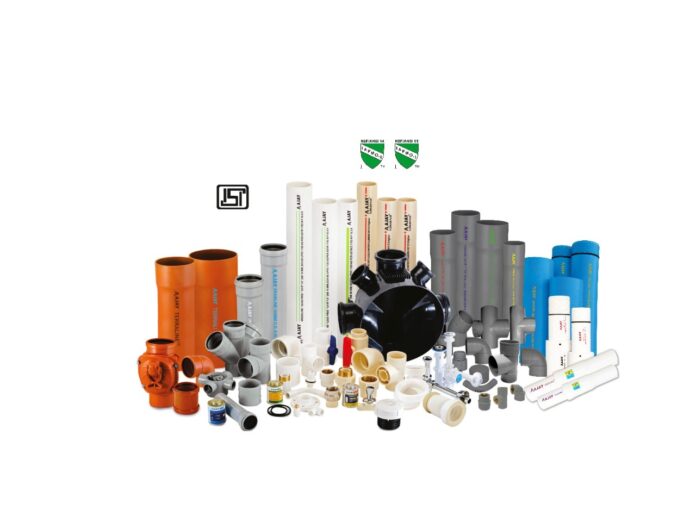How Do Plumbing Traps Work- By Ajay Pipes

A plumbing trap is a straightforward piece of pipe that is bent into a specific form to allow waste to pass through the PVC water pipes. Additionally, it keeps fluids in place to stop sewer gases from penetrating the building. In home applications, U, J, Q, or S-shaped pipes are typically found inside or directly beneath a plumbing fixture.
Comparatively, a P-shaped plumbing trap is the most popular choice. There are numerous types of plumbing traps on the market. Plumbing work is basically related to the delivery of water and sewage disposal. The plumbing pipes framework will continue to be odourless because it was skilfully planned and installed. The following are the key features of a plumbing trap. It may be constructed as an integral part of the machine, as in some European toilet types, or it may be a distinct fitting known as a joined trap, which is connected to the waste or foul water exit of apparatuses.
The traps need to be self-cleaning in nature. Traps for domestic trash should be useful for cleaning. A good trap should maintain a strong water seal underneath all stream conditions. Plumbing traps store a finite amount of water and are located inside or beneath a pipe device. By creating a water seal, the holding water stops noxious gases from re-entering the channel pipes’ framework.
Floor Trap
The term “floor trap” is also used to refer to an area for washing or bathing in Hindi (Nahni). By constructing a water seal, Nahani Trap serves to keep bad gases from entering the structure. The water seal should be at least 50 mm deep. Floor traps stop foul gases (bad odours) from entering the building whether or not waste water is running.
A floor trap, also known as a Nahni trap, is built into the floor to collect wastewater from the bathroom, washroom, wash basin, kitchen sinks, and other locations. PVC, UPVC, and CI floor traps are available; they lack a vent pipe but have a detachable grating at the top.
Floor traps, also known as Nahni traps (Nahni is Arabic for “washing place”), exist in a range of designs, dimensions, and outlet configurations. Many have a non-uniform and rough bore and no water seal at all. Nahni traps’ poor casting, design, and build quality make them a major source of leaks. Only deep seal P traps with multi-inlet fitting or traps with connections from wash basins and other fitting to give a positive joint are used to prevent it.
Evaporation could cause traps placed in regions that aren’t regularly used to lose their water seal. By attaching a waste appliance to the trap, a provision can be created to regularly introduce water to refresh the seal (e.g. a wash basin, etc). The floor trap has a length of 310 mm, a minimum diameter of 80 mm at the inlet end, a diameter of 30 mm close to the outlet end, and a diameter of 73 mm outside the floor trap’s outlet. Moreover, a 95 mm grating with 8 mm diameter holes is placed at the top of the floor trap. The Nahni Trap’s top grating stops pests and insects (such as cockroaches) from entering the bathroom or toilet through the sewer line.
Get to know more information on https://ajaypipes.com/
Read Full Article on Bestofhindustan And Follow us on Instagram Bestofhindustan



